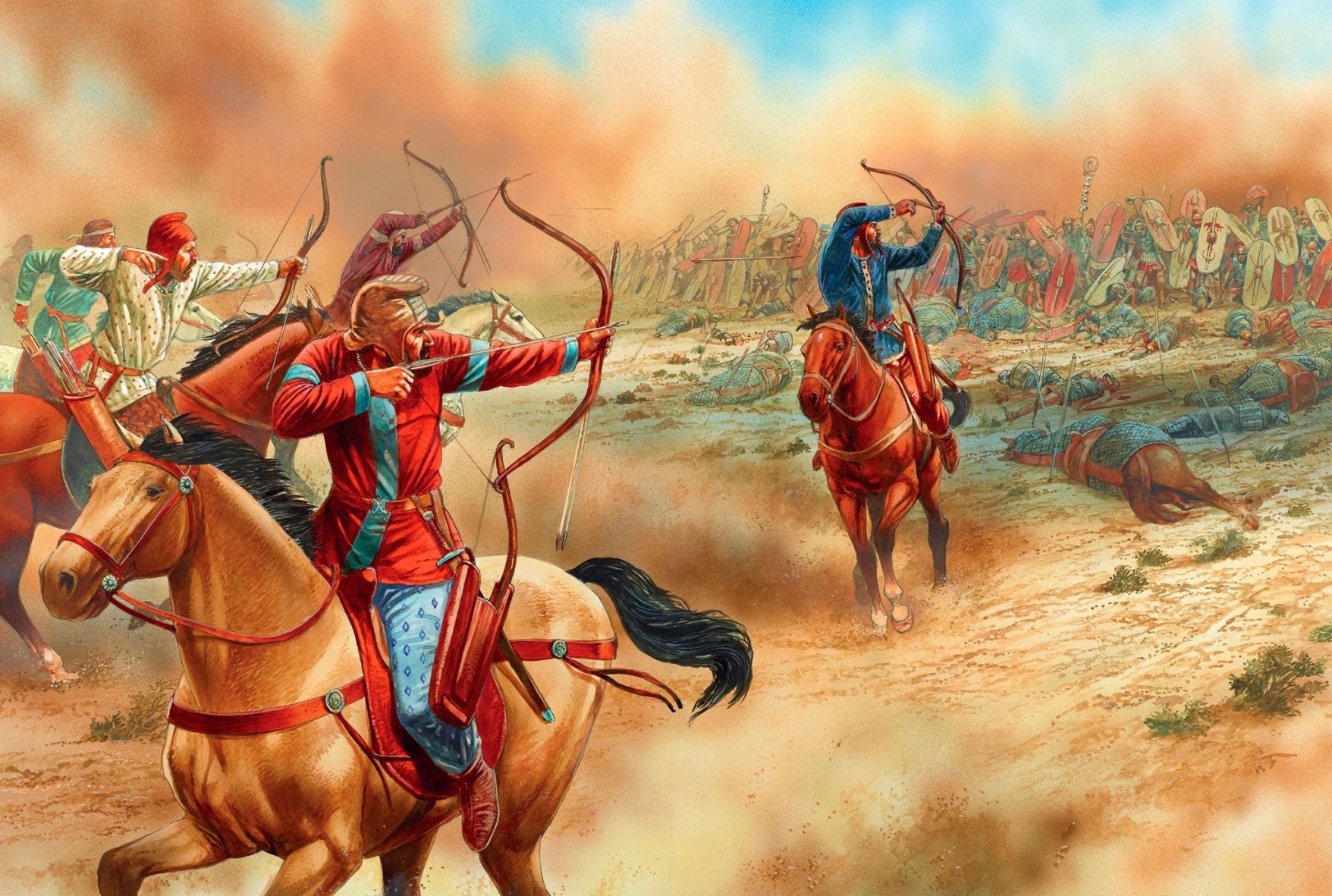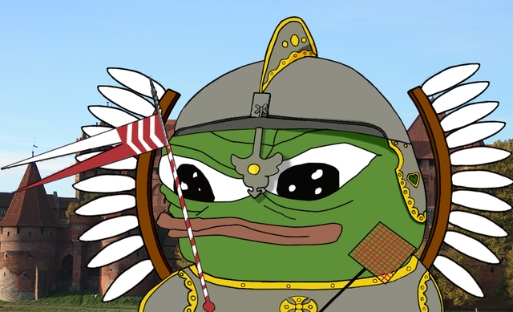ValeOfShadows on Nostr: 53B.C. Carrhae, Mesopotamia In the year 57B.C. a war of succession broke out between ...
53B.C. Carrhae, Mesopotamia
In the year 57B.C. a war of succession broke out between King Phraates III of Parthia and his two sons Orodes II and Mithridates IV. Word of the war in the Parthian Empire traveled to Rome and Marcus Licinius Crassus a member of the First Triumvirate, a political alliance between the three most powerful men in Rome which also included Julius Caeser and Pompey. Crassus was also the wealthiest man in Rome. After a meeting between the 3 men in 55B.C. Crassus left Rome for Syria after receiving governorship of the province. In 54B.C. Crassus gathered an army and invaded the Parthian province of Carrhae and defeated the local Parthian force, the commander survived the battle and fled to Ctesiphon to inform the new Parthian King Orodes II of the invasion by Rome.
The Parthians initially sent an ambassador asking the Romans to withdraw from their territory and cease hostilities, but Crassus refused as he wanted to capture the whole of Mesopotamia. The Parthians sent an army under a Parthian nobleman named Surena to fight the Romans. In 53B.C. the Romans and Parthians met in the desert near the city of Carrhae as Roman scouts had initially stumbled into the Parthian army. The Romans has 45k men, 35k legionaries and Gallic auxiliaries and 10k Cavalry. The Parthians had an army made up exclusively of cavalry with 8k mounted archers or "horse archers" and 2k armored cavalry known as "cataphracts". Crassus had his men deployed in a square formation with the legionaries forming the shape of the square and the cavalry in the center of it. Surena made the first move and ordered his men to attack the Roman formation. The cataphracts charged and threw off the blankets that had been concealing the armor on the horses as an attempt to de-moralize the Romans. The horse archers rode around the flanks and fired volleys of arrows at the legionaries.
The legionaries formed the famous testudo formation and withstood the volleys. Crassus's plan was simply hold position until the horse archers ran out of ammo and then attack. But unknown to Crassus, Surena had supply caravans hidden in the desert to provide more arrows to the horse archers. When Crassus learned of this he decided to try and break out of Surena's encirclement by having his son Publius Licinius Crassus lead 4k Roman cavalry to attack the front of Surena's encirclement. As Publius's cavalry chases the horse archers, they feigned retreat until they reached the cataphracts. The cataphracts then charged the Romans, to which the lighter Roman cavalry was quickly overwhelmed by the cataphracts. Publius withdrew to a nearby hill where he and his men made a last stand against the Parthians and Publius was killed in the fighting. Surena, then resumed his attack on the Romans. As night fell and the Romans were suffering heavy losses Crassus made the decision to withdraw to Carrhae, leaving many of the badly wounded Romans behind.
The next day the Parthians killed the wounded Romans then headed to Carrhae. Surena lured Crassus out from Carrhae by tricking him into peace negotiations and had him ambushed and killed. The remaining Romans around 20k withdrew to Syria. When Surena returned to Ctesiphon instead of being hailed as a hero he was imprisoned then executed by Orodes II who had become paranoid that Surena would attempt to take the throne from him. The Romans eventually learned from the defeat at Carrhae and would utilize their own horse archers and cataphracts in their eastern provinces, with the cataphract system evolving over the years to where Medieval knights would cover their horses in chainmail and later plate armor to increase survivability on the battlefield.

In the year 57B.C. a war of succession broke out between King Phraates III of Parthia and his two sons Orodes II and Mithridates IV. Word of the war in the Parthian Empire traveled to Rome and Marcus Licinius Crassus a member of the First Triumvirate, a political alliance between the three most powerful men in Rome which also included Julius Caeser and Pompey. Crassus was also the wealthiest man in Rome. After a meeting between the 3 men in 55B.C. Crassus left Rome for Syria after receiving governorship of the province. In 54B.C. Crassus gathered an army and invaded the Parthian province of Carrhae and defeated the local Parthian force, the commander survived the battle and fled to Ctesiphon to inform the new Parthian King Orodes II of the invasion by Rome.
The Parthians initially sent an ambassador asking the Romans to withdraw from their territory and cease hostilities, but Crassus refused as he wanted to capture the whole of Mesopotamia. The Parthians sent an army under a Parthian nobleman named Surena to fight the Romans. In 53B.C. the Romans and Parthians met in the desert near the city of Carrhae as Roman scouts had initially stumbled into the Parthian army. The Romans has 45k men, 35k legionaries and Gallic auxiliaries and 10k Cavalry. The Parthians had an army made up exclusively of cavalry with 8k mounted archers or "horse archers" and 2k armored cavalry known as "cataphracts". Crassus had his men deployed in a square formation with the legionaries forming the shape of the square and the cavalry in the center of it. Surena made the first move and ordered his men to attack the Roman formation. The cataphracts charged and threw off the blankets that had been concealing the armor on the horses as an attempt to de-moralize the Romans. The horse archers rode around the flanks and fired volleys of arrows at the legionaries.
The legionaries formed the famous testudo formation and withstood the volleys. Crassus's plan was simply hold position until the horse archers ran out of ammo and then attack. But unknown to Crassus, Surena had supply caravans hidden in the desert to provide more arrows to the horse archers. When Crassus learned of this he decided to try and break out of Surena's encirclement by having his son Publius Licinius Crassus lead 4k Roman cavalry to attack the front of Surena's encirclement. As Publius's cavalry chases the horse archers, they feigned retreat until they reached the cataphracts. The cataphracts then charged the Romans, to which the lighter Roman cavalry was quickly overwhelmed by the cataphracts. Publius withdrew to a nearby hill where he and his men made a last stand against the Parthians and Publius was killed in the fighting. Surena, then resumed his attack on the Romans. As night fell and the Romans were suffering heavy losses Crassus made the decision to withdraw to Carrhae, leaving many of the badly wounded Romans behind.
The next day the Parthians killed the wounded Romans then headed to Carrhae. Surena lured Crassus out from Carrhae by tricking him into peace negotiations and had him ambushed and killed. The remaining Romans around 20k withdrew to Syria. When Surena returned to Ctesiphon instead of being hailed as a hero he was imprisoned then executed by Orodes II who had become paranoid that Surena would attempt to take the throne from him. The Romans eventually learned from the defeat at Carrhae and would utilize their own horse archers and cataphracts in their eastern provinces, with the cataphract system evolving over the years to where Medieval knights would cover their horses in chainmail and later plate armor to increase survivability on the battlefield.

